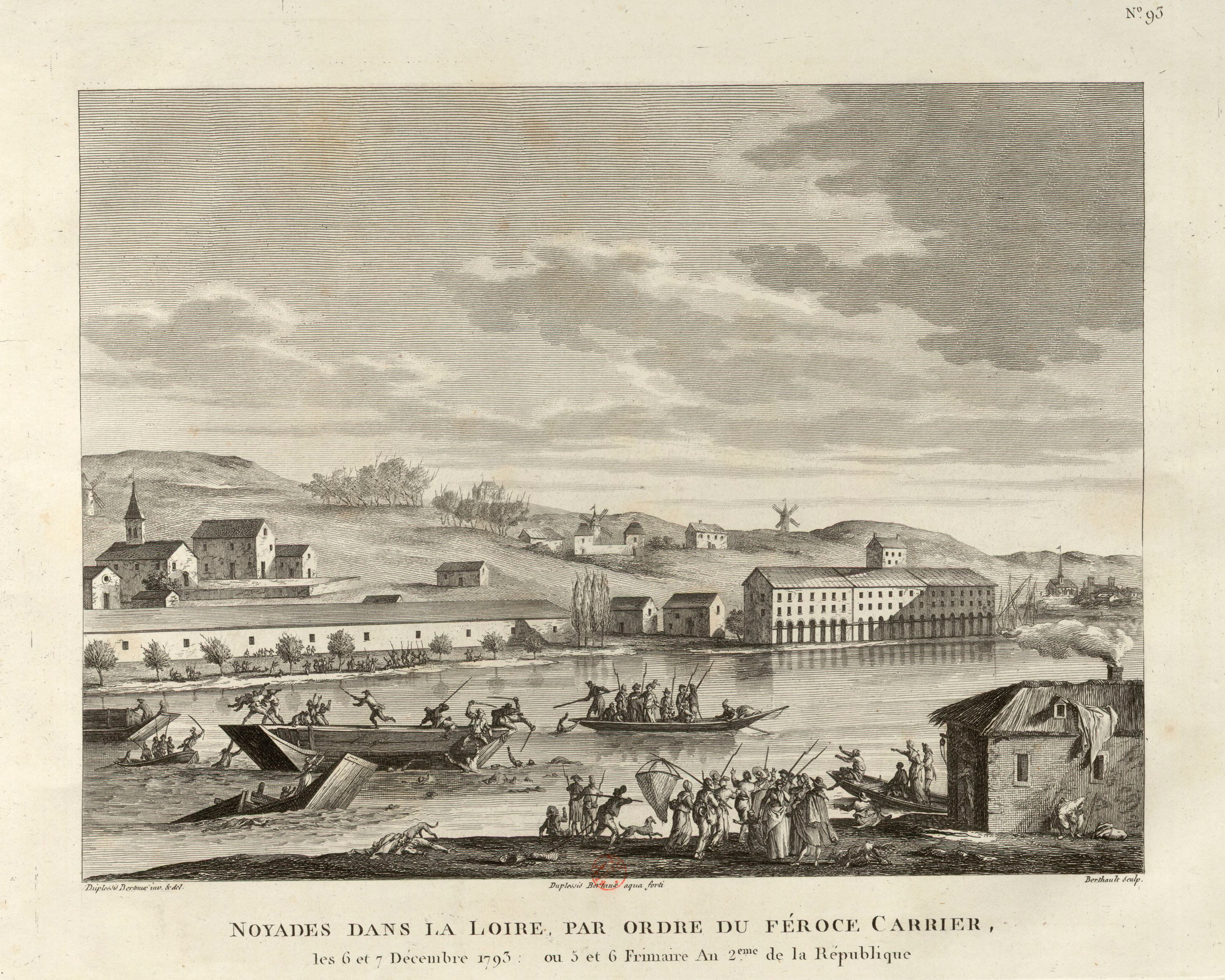|
Citizen Chauvelin
Citizen Armand Chauvelin (''Citoyen Chauvelin'' in French) is the villain in Baroness Emmuska Orczy's classic novel ''The Scarlet Pimpernel'' and the various plays and films derived from the work. Overview He is cast as Sir Percy Blakeney's arch-enemy throughout the novel's many sequels and appears in almost all of them. The former ambassador to the Court of St. James's (''The Scarlet Pimpernel'', '' The Elusive Pimpernel''), Chauvelin is both a representative in the National Assembly and the chief agent of the Committee of Public Safety. Chauvelin is also an old friend of the Pimpernel's wife Lady Blakeney, having been a frequenter of her salon in Paris before her marriage (and is depicted in some film treatments as being Marguerite's suitor or lover prior to her marriage to Sir Percy). Chauvelin is a ruthless, amoral patriot who firmly believes that the League of the Scarlet Pimpernel is a threat and a mockery to the French Republic, and uses his position incessantly t ... [...More Info...] [...Related Items...] OR: [Wikipedia] [Google] [Baidu] |
The Scarlet Pimpernel
''The Scarlet Pimpernel'' is the first novel in a series of historical fiction by Baroness Orczy, published in 1905. It was written after her stage play of the same title (co-authored with Montague Barstow) enjoyed a long run in London, having opened in Nottingham in 1903. The novel is set during the Reign of Terror following the start of the French Revolution. The title is the ''nom de guerre'' of its hero and protagonist, a chivalrous Englishman who rescues aristocrats before they are sent to the guillotine. Sir Percy Blakeney leads a double life: apparently nothing more than a wealthy fop, but in reality a formidable swordsman and a quick-thinking master of disguise and escape artist. The band of gentlemen who assist him are the only ones who know of his secret identity. He is known by his symbol, a simple flower, the scarlet pimpernel (''Anagallis arvensis''). Opening at the New Theatre in London's West End on 5 January 1905, the play became a favourite of British audienc ... [...More Info...] [...Related Items...] OR: [Wikipedia] [Google] [Baidu] |
National Assembly (French Revolution)
During the French Revolution, the National Assembly (french: Assemblée nationale), which existed from 17 June 1789 to 29 September 1791, was a revolutionary assembly of the Kingdom of France formed by the representatives of the Third Estate (commoners) of the Estates-General. Thereafter (until replaced by the Legislative Assembly on 30 Sept 1791), it was known as the National Constituent Assembly (), although the shorter form was favored. Background The Estates-General had been called on 5 May 1789 to manage France's financial crisis, but promptly fell to squabbling over its own structure. Its members had been elected to represent the estates of the realm: the 1st Estate (the clergy), the 2nd Estate (the nobility) and the 3rd Estate (which, in theory, represented all of the commoners and, in practice, represented the bourgeoisie). The Third Estate had been granted "double representation"—that is, twice as many delegates as each of the other feudal estates—but at the ... [...More Info...] [...Related Items...] OR: [Wikipedia] [Google] [Baidu] |
Jean-Baptiste Donatien De Vimeur, Comte De Rochambeau
Marshal Jean-Baptiste Donatien de Vimeur, comte de Rochambeau, 1 July 1725 – 10 May 1807, was a French nobleman and general whose army played the decisive role in helping the United States defeat the British army at Yorktown in 1781 during the American Revolution. He was commander-in-chief of the French Expeditionary Force sent by France to help the American Continental Army fight against British forces. Military life Jean-Baptiste Donatien de Vimeur was born in Vendôme, in the province of Orléanais, and he was educated at the Jesuit college in Blois. After the death of his elder brother, he entered a cavalry regiment and served in Bohemia, Bavaria, and on the Rhine during the War of the Austrian Succession. By 1747, he had attained the rank of colonel. He took part in the Siege of Maastricht (1748) and became governor of Vendôme in 1749. He distinguished himself in the Battle of Minorca (1756) on the Seven Years' War outbreak and was promoted to Brigadier General o ... [...More Info...] [...Related Items...] OR: [Wikipedia] [Google] [Baidu] |
Bernard-François, Marquis De Chauvelin
François-Bernard de Chauvelin, marquis de Grosbois (born 29 November 1766 in Paris; died 9 April 1832 in Paris), also known as ''Marquis de Chauvelin'', was a French nobleman, diplomat, parliamentarian and liberal reformer. Biography The scion of an illustrious family, Chauvelin followed his father François-Claude de Chauvelin as ''Master of the King's Wardrobe'' (to Louis XVI) and fought in the Comte de Rochambeau's French Expeditionary Force. However, despite being of aristocratic birth, he had been raised with liberal views and thus became supportive of the French Revolution. In February 1792 he married Herminie-Felicienne-Joséphine Tavernier de Boulogne de Magnanville and was posted to the Court of St. James's, styled "Ambassador's Cloak" (or Deputy Ambassador), under Talleyrand. His role in London was to persuade the British Government to remain neutral in the impending war between France and Austria and Prussia. Arriving in May 1792, Chauvelin was well received at fir ... [...More Info...] [...Related Items...] OR: [Wikipedia] [Google] [Baidu] |
Jean-Baptiste Carrier
Jean-Baptiste Carrier (, 16 March 1756 – 16 December 1794) was a French Revolutionary and politician most notable for his actions in the War in the Vendée during the Reign of Terror. While under orders to suppress a Royalist counter-revolution, he commanded the execution of 4,000 civilians, mainly priests, women and children in Nantes, some by drowning in the river Loire, which Carrier described as "the National Bathtub." After the fall of the Robespierre government, Carrier was tried for war crimes by the Revolutionary Tribunal, found guilty, and executed. Early life Carrier was born at Yolet, a village near Aurillac in upper Auvergne, as the fourth of six children born to Jean Carrier and Marguerite Puex. As the son of a middle class tenant farmer, Carrier and his family survived on income reaped from cultivating the land of a French nobleman. After attending a Jesuit school in Aurillac, he was able to pursue a wide variety of career interests. Carrier worked in a law off ... [...More Info...] [...Related Items...] OR: [Wikipedia] [Google] [Baidu] |
Lord Tony's Wife
''Lord Tony's Wife'', by Baroness Orczy is a sequel book to the classic adventure tale, ''The Scarlet Pimpernel.'' It was first published in 1917. A French-language version, translated and adapted by Françoise delle Donne, was published in 1954 under the title ''Le Rire du Mouron Rouge.'' Plot summary The year is 1789 and Pierre Adet, a young French peasant, is incensed at the unfair treatment of the local peasantry, who are no better off than slaves to the local aristocrat. His brother-in-law is about to be hanged for poaching two pigeons from the woods belonging to the Duc de Kernogan in Nantes and this proves the final straw. After months of planning Pierre leads a mob against the Duc against the advice of his father. Before the mob have had the chance to storm the Chateau, they come across the Duc's young daughter Yvonne returning home and attack her carriage. In the ensuing scuffle, Adet assaults Yvonne '' 'And just to punish you, my fine lady,' he said in a whisper w ... [...More Info...] [...Related Items...] OR: [Wikipedia] [Google] [Baidu] |
Thermidorian Reaction
The Thermidorian Reaction (french: Réaction thermidorienne or ''Convention thermidorienne'', "Thermidorian Convention") is the common term, in the historiography of the French Revolution, for the period between the ousting of Maximilien Robespierre on 9 Thermidor II, or 27 July 1794, and the inauguration of the French Directory on 2 November 1795. The "Thermidorian Reaction" was named after Thermidor, the month in which the coup took place and was the latter part of the National Convention's rule of France. It was marked by the end of the Reign of Terror, decentralization of executive powers from the Committee of Public Safety and a turn from the radical Jacobin policies of the The Mountain, Montagnard Convention to more conservative positions. Economic and general populism, dechristianization, and harsh wartime measures were largely abandoned, as the members of the convention, disillusioned and frightened of the centralized government of the Terror, preferred a more stable polit ... [...More Info...] [...Related Items...] OR: [Wikipedia] [Google] [Baidu] |
The Triumph Of The Scarlet Pimpernel
''The Triumph of the Scarlet Pimpernel'', first published in 1922, is a book in the series about the Scarlet Pimpernel's adventures by Baroness Orczy. Again Orczy interweaves historic fact with fiction, this time through the real life figures of Thérésa Cabarrus, and Jean-Lambert Tallien; inserting the Scarlet Pimpernel as an instigator of the role Tallien played in the Thermidorian Reaction in July 1794. Plot summary The story starts in Paris in April 1794, year II of the French Revolution The French Revolution ( ) was a period of radical political and societal change in France that began with the Estates General of 1789 and ended with the formation of the French Consulate in November 1799. Many of its ideas are considere .... Theresia Cabarrus is a beautiful but shallow Spaniard who is betrothed to Citizen Tallien the popular Representative in the Convention and one of Robespierre's inner circle. She is credited with exercising a mellowing influence over Tall ... [...More Info...] [...Related Items...] OR: [Wikipedia] [Google] [Baidu] |
The Scarlet Pimpernel (1982 Film)
''The Scarlet Pimpernel'' is a 1982 British romantic adventure television film set during the French Revolution. It is based on the novels ''The Scarlet Pimpernel'' (1905) and ''Eldorado'' (1913) by Baroness Emmuska Orczy, and stars Anthony Andrews as Sir Percy Blakeney/the Scarlet Pimpernel, the protagonist, Jane Seymour as Marguerite St. Just, the love interest, and Ian McKellen as Chauvelin, the antagonist. In 1792 during the Reign of Terror, the Scarlet Pimpernel rescues French aristocrats while posing as the wealthy but foppish and seemingly empty-headed Sir Percival Blakeney. Percy marries the beautiful French actress Marguerite St. Just, but her previous relationship with Robespierre's agent Paul Chauvelin may endanger the Pimpernel's plans to save the young Dauphin, eldest son of the former King of France. The story differs from the book but is largely inspired by it. Plot In 1792 during the Reign of Terror of the French Revolution, a secret league of brave Englishmen ... [...More Info...] [...Related Items...] OR: [Wikipedia] [Google] [Baidu] |
The Scarlet Pimpernel (TV Series)
''The Scarlet Pimpernel'' is a series of television drama programmes loosely based on Baroness Emmuska Orczy's series of novels, set during the French Revolution. It stars Richard E. Grant as Sir Percy Blakeney, and his alter ego, the eponymous hero. The first series also starred Elizabeth McGovern as his wife Marguerite and Martin Shaw as the Pimpernel's archrival, Paul Chauvelin. Robespierre was played by Ronan Vibert. It was filmed in the Czech Republic and scored by a Czech composer, Michal Pavlíček. Cast * Stuart Fox as Monsieur Jouvin * Sarah Berger as Madame Jouvin * Dalibor Sipek as The Dauphin * Suzanne Bertish as La Touraine * Jonathan Coy as Prince of Wales * Richard E Grant as Sir Percy Blakeney * Elizabeth McGovern as Lady Marguerite Blakeney * Anthony Green as Sir Andrew Foulkes * Beth Goddard as Lady Suzanne Foulkes * Jerome Willis as Baron Valdemar * Martin Shaw as Chauvelin * Ron Donachie as Mazarini * Gerard Murphy as Planchet * Ronan Vibert as Robe ... [...More Info...] [...Related Items...] OR: [Wikipedia] [Google] [Baidu] |
French Revolution
The French Revolution ( ) was a period of radical political and societal change in France that began with the Estates General of 1789 and ended with the formation of the French Consulate in November 1799. Many of its ideas are considered fundamental principles of liberal democracy, while phrases like ''liberté, égalité, fraternité'' reappeared in other revolts, such as the 1917 Russian Revolution, and inspired campaigns for the abolition of slavery and universal suffrage. The values and institutions it created dominate French politics to this day. Its causes are generally agreed to be a combination of social, political and economic factors, which the ''Ancien Régime'' proved unable to manage. In May 1789, widespread social distress led to the convocation of the Estates General, which was converted into a National Assembly in June. Continuing unrest culminated in the Storming of the Bastille on 14 July, which led to a series of radical measures by the Assembly, i ... [...More Info...] [...Related Items...] OR: [Wikipedia] [Google] [Baidu] |
Sir Percy Hits Back
''Sir Percy Hits Back'' is (chronologically) the ninth book in the Scarlet Pimpernel series by Baroness Orczy Baroness Emma Orczy (full name: Emma Magdolna Rozália Mária Jozefa Borbála Orczy de Orci) (; 23 September 1865 – 12 November 1947), usually known as Baroness Orczy (the name under which she was published) or to her family and friends as Em .... It was first published in 1927. A French-language version, translated and adapted by Charlotte and Marie-Louise Desroyses, was also published under the title ''La Vengeance du Mouron Rouge''. Plot For young and pretty Fleurette the revolution seems far away until an aristocratic neighbouring family is threatened. The dangers become all too real, and she is accused of being a traitor. Can her father save her? Fleurette's father is Armand Chauvelin. The villainous agent is forced to ask his arch-enemy, the heroic Scarlet Pimpernel, for help. References External links * * 1927 British novels Scarlet Pimpernel book ... [...More Info...] [...Related Items...] OR: [Wikipedia] [Google] [Baidu] |


.jpg)



